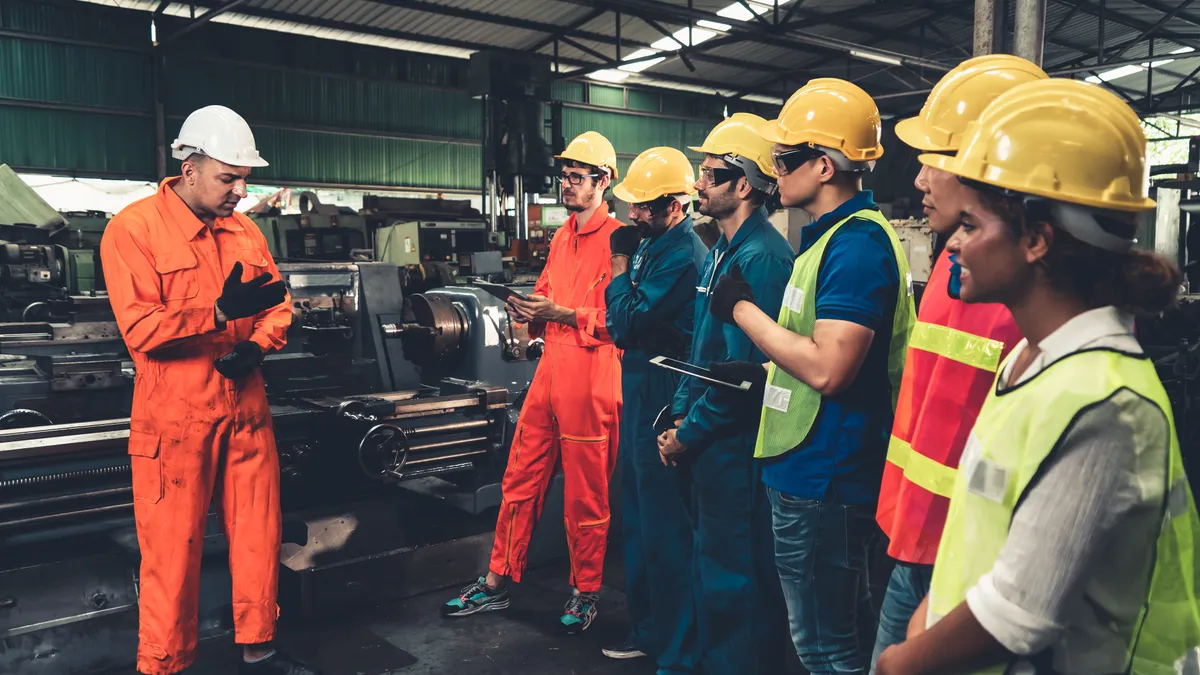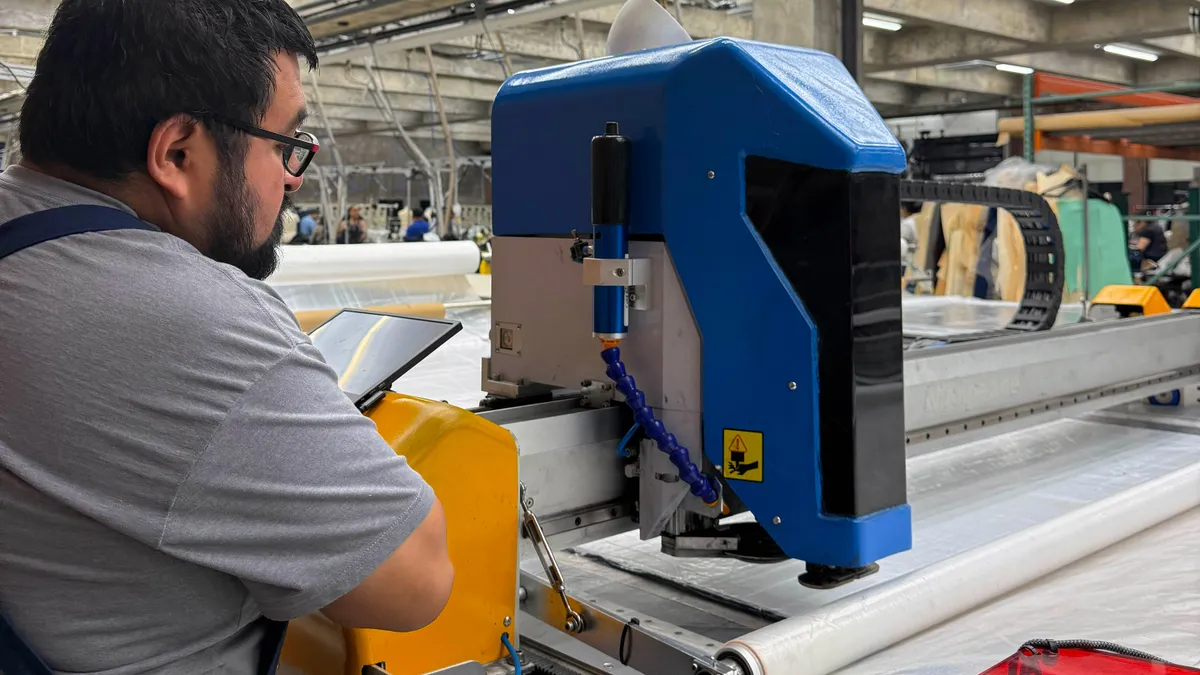What does it take to make your manufacturing environment safe for workers? Investing in protective gear? Ensuring entrances and walkways are clear? Holding daily safety meetings? Providing equipment training?
For decades, the manufacturing industry sought to protect workers by prioritizing physical safety. While physical safety is an important component of a safety program, it should not be the only one. Instead, manufacturers should consider physical safety as a foundation to build a more comprehensive program that propels worker well-being to the next level.
Human-centered safety — also known as whole-person safety, Total Worker Health® (a term trademarked by the National Institute for Occupational Safety & Health) or holistic safety — can help manufacturers evaluate the safety of their work environments from every angle while putting employees first.
What human-centered safety means for manufacturers
Unlike other employee well-being approaches manufacturers may have encountered, human-centered safety takes a different view on health and safety.
How is it different? It begins by redefining how to view employees and what they have to offer; employees are people first, workers second. People are priceless, and the workers who assemble parts and products, conduct quality control checks, pack containers for shipment or storage, and operate and repair equipment aren’t commodities that serve a single purpose. Rather, they’re humans who can have pride in their work, be empowered to complete their jobs better and continue to learn.
In manufacturing, human-centered safety prioritizes:
- Well-being in every aspect of an employee’s life — physical, mental and emotional — to prevent injury and illness both inside and outside of work.
- Improvement of relationships, attitudes, behaviors and interactions through skills enhancement.
- Recognizing and valuing the contributions of employees.
- Reducing the physical and mental toll of manufacturing work wherever and whenever possible.
- An environment centered on honesty, collaboration and feedback without fear of consequences.
“Traditionally, in manufacturing industries, you bring someone in, and you want them to show up on time, stay away from drugs and learn what to do in their role,” says Jill James, chief safety officer at HSI. “As they gain expertise, they may be able to assist others or grow within the organization. But whole-person safety is about much more: happiness, confidence, and experiencing a sense of purpose and belonging. These things matter just as much as being physically safe.”
Human-centered safety also supports safety for employees beyond those working on the factory floor — e.g., laborers, assemblers, operators, inspectors and machinists — covering supervisors and managers, too. These leaders should be equipped to facilitate wellness and professional development for themselves and their reports. A human-centered safety approach can help everyone develop the skills they need to:
- Communicate and listen.
- Conduct difficult conversations.
- Think critically.
- Solve problems.
- Build relationships.
- Practice empathy.
- Demonstrate resilience amid change.
- Exhibit compassion.
- Provide comfort and advice.
- Conduct acts of inclusivity.
- Answer tough questions.
The result: a healthier, more inclusive work environment for all.
Why threats to mental & emotional health matter
Threats to physical health, such as combustible material, electrical hazards, dangerous chemicals or heavy equipment, are not the only things that put employee safety at risk. Manufacturers should also consider threats to mental and emotional health.
According to a 2023 injury impact report, manufacturing employees miss an average of 66 days per year due to workplace injuries. These injuries may be caused by slips or trips, overexertion or repetitive motion. However, there are often other factors that affect a worker’s mental and emotional well-being during working hours. These distractions can contribute to illnesses and accidents that impact physical safety.
Contributing factors could involve:
- Adversarial interactions with no collaborative, common-goal conversations.
- Unhealthy expressions of frustration and anger, such as yelling or dismissiveness.
- High levels of stress and emotion with no way to manage them.
- Concern about expressing opinions or asking for help.
- Fear of being ignored, laughed at, reprimanded or judged.
Talk to Workers About Being Human
If your workplace makes employees feel vulnerable instead of valued, then they are likely wondering if you have their best interests at heart. And if they’re wondering that, it may not be long before they start looking for a new company.
Some examples of ways to show employees you value them include:
- Providing household financial training to reduce stress when coming into the workplace.
- Passing out electrolyte ice pops when working conditions are extreme.
- Fixing the “small things” around the workplace that are constantly nagging workers.
- Holding diversity and workplace harassment training programs.
- Offering communication training that shows employees new ways of making statements or raising questions.
By recognizing the emotional state of workers and implementing solutions that help address their problems, you show that you pay attention to more than just physical actions.
While not all manufacturing employees may expect such a comprehensive, human-centered approach to safety today, taking steps in this direction now will make your company a better place to be for them and you. It will also help ensure you’re prepared when workers start to look for more from employers.
To start: “Don’t just continue to pull that dusty, three-ring binder off the shelf and recycle information on physical safety and first aid,” James says. “Talk about being human. Talk about and educate on the soft skills we need in order to work better together. This will improve everyone’s lives.”
Learn more about incorporating human-centered safety into your manufacturing business by reading 10 Benefits of a True Learning Culture or Bringing Human Performance Fundamentals to the Workplace.
For additional information and resources, visit http://www.hsi.com.










